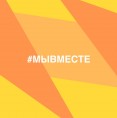- Gala evening dedicated to the 100th anniversary of State Museum of Political History of Russia
- Opening of the exhibition "People want to know"
- Opening of the exhibition "A special purpose museum"
- Museum Night 2019
- Opening of the exhibition "The Leningrad Affair: the City and the People"
- Exhibitions in 2018
- Museum Night 2018
- Russian Chess Championships Superfinals among men and women
- To the 100th anniversary of the Revolution of 1917
- Conference “Revolution in 1917 in Russia: Events and Conceptions, Consequences and Memory”
- Opening of the exhibition "Secret service agent Alexander Feklisov: the “hot” routine of the Cold War"
- Museum Night 2016
- Opening of the exhibition "FOR WHOM THE BELL TOLLS… Wars and armed conflicts of the XXI century"
- Opening of the exhibition "Mysteries of Political Murders: the Gapon and Rasputin cases"
- Opening of the exhibition "Onward! To the stars!"
- Opening of the exhibition "The Russian Revolution 1917-1922"
- ICOM International Conference “Museum and Politics”
- The Night of Museums 2014
- Openning of the exhibition "...More than sport"
- Opening of the exhibition "Man and Power in Russia in the 19th – 21st Centuries"
- Главная страница
- -Virtual museum
- -Photogallery
- -Conference “Revolution in 1917 in Russia: Events and Conceptions, Consequences and Memory”
Conference “Revolution in 1917 in Russia: Events and Conceptions, Consequences and Memory”
On the 11th of May, the first day of the conference, “Revolution in 1917 in Russia: Events and Conceptions, Consequences and Memory” took place at the Museum of Political History of Russia. The conference gathered academics from twelve cities across Russia, as well as eight different countries: China, the USA, France, Poland, Germany, Finland, and Norway.
Academics and researchers of revolution delved into the core questions of this revolutionary time: the problems of periodization, the trouble with finding an exact starting date of revolutionary events, how to categorize the double power in the revolutionary political system, and how this all fits into the context of world history. Several questions arise, from the fairness of calling the events that occurred in Russia, the “Great Russian Revolution,” considering the role “German money” played in bringing the Bolshevik leader Lenin into Russia through hostile Germany, to the deceptively simple question posed by speaker N.N. Smirnov: “What is Russia?”
One of the central issues for discussion at the conference was the problem of the formation of historical memory. “This conference was not by chance held at the Museum of Political History of Russia; after all, this place was the first historical-revolutionary museum of Soviet Russia, and for 72 years carried the name “The State Museum of Revolution,” said General Director Evgeniy Artemov in his opening remarks. He reminded listeners that museum staff had their own experience living through the influence of power on historiography. During the bitter internal power struggles forever raging within Soviet government, the evaluation of the events of the October Revolution and the role of its participants was constantly changing. In the beginning of the 1930s, the attempts of the museum to portray historical truths were severely curbed by higher powers. The exhibition halls had to be entirely redone, and within a decade after 1945, the museum was closed most of the time.
The introductory plenary was concluded with questions and comments from the conference participants, who highlighted the importance in maintaining relations between foreign and Russian historians, as well as introducing several new arguments as to the true date of the start of the February Revolution. Participants could then pick one of three afternoon discussion sections to attend: “Political Parties, Actions, and Communications”; “Museumification of the History of the Revolution”; “Historical Memory.” The first day of the conference was concluded with a tour of the Museum of Political History’s exhibit, “Man and Power in Russia in XIX-XX Centuries.”
















